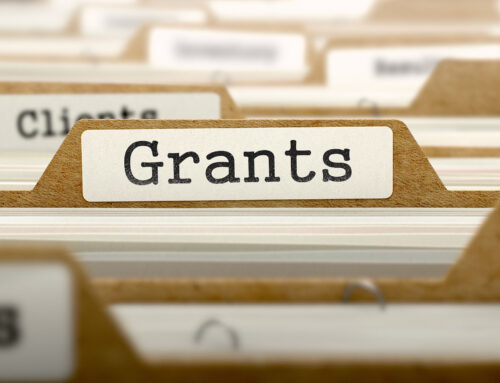 Everyone loves accomplishment.
Everyone loves accomplishment.
There’s nothing like the feeling of hitting a goal. It’s satisfying and gives you a sense of pride.
But to do it in half the usual amount of time is thrilling.
That’s what happened to Ellen Bushman.

The nonprofit is big – its programs cover the entire state of Virginia. Thanks to a number of government grants and contracts, Ellen’s Development team is only responsible for raising $243,000. Considering that just a few years ago, she was raising a fraction of that, it’s a lot.
I started working with Ellen a couple of years ago when organizational leaders decided it was time to lessen the reliance on government money and increase the amount of unrestricted funds that come from donor-based fundraising.
Back then, it was Ellen who did Development and Carol who headed up Communications and Marketing. Today, just two years later, they have five additional staff who help with fundraising, grants, social media, and volunteers.
Ellen called me last month to let me know they had hit their entire goal for the fiscal year (July-June) by the end of December. She knew I’d be thrilled and do the Happy Dance with her.
“You did WHAT??” I screamed into the phone.
Yep. She explained how they blew past their goal of $243,000 in just 6 months. I grabbed a pen and started scribbling because I knew you’d want to know how she did that.
Here’s how Ellen hit her annual fundraising goal in half the normal time.
Here’s what Ellen said:
1. They started with a plan. They knew that to get serious about fundraising – they couldn’t wing it. So the Development staff put their heads together and came up with a plan for raising money, renewing donors, and deepening relationships. They took the time to put some detail in it and figure out what role everyone would play.
2. They got strategic. They found out they were getting a significant increase in tax credits and wanted to carefully think about how to use them. For those who are unfamiliar, some states like Virginia offer tax incentives to individuals who make large charitable gifts, lessening their tax liability. It’s a win for the donor and a win for the charity. They had a LOT to give and didn’t want to waste the opportunity.
3. They got focused. The team kept a list of what had to be accomplished to maximize their tax credits in addition to their other fundraising. They wanted to accommodate their current donors and bring in as many new ones as possible with this opportunity. They wound up with four new donors who made large gifts totaling $70,000. Merry Christmas Ellen, right?
 4. They spread the word. The Marketing/Communications staff got busy and shared more than ever. Donors, prospects, and the communities served saw more stories, video, photos and social media. In general, they became more visible. Here’s one video that stole my heart! They also held “Lunch and Learn” events at some locations to give people a closer look at their work and find out how they could get involved.
4. They spread the word. The Marketing/Communications staff got busy and shared more than ever. Donors, prospects, and the communities served saw more stories, video, photos and social media. In general, they became more visible. Here’s one video that stole my heart! They also held “Lunch and Learn” events at some locations to give people a closer look at their work and find out how they could get involved.
5. They got into motion. They created a flier about the tax credits and sent that out along with a special letter to donors who gave $200 or more. They made phone calls to major donors to let them know about the tax credits and give them updates on program outcomes. They made SURE their donors knew about this opportunity to give.
6. They kept the communication open. Tax credits weren’t all they talked about. They kept donor newsletters full of stories from the front lines of lives being changed. They showed donors how they had helped make it all happen. They created an awesome digital annual report for donors to recap the previous year’s work. (http://lfsva.org/annual-report/).
7. They asked for money. Their Fall appeal was segmented into 4 groups of donors based on previous giving. They wrote a terrific, donor-focused letter and told a heart-tugging story, and the appeal generated $20,000.
They conducted a staff campaign, starting with their leadership team who each made a donation. From there, they invited mid-level staff to give and raised $24,000 in short order. Having payroll deduction made it super easy for staff members to give. The best news? They still have a large number of front-line staff to ask!
A Board campaign resulted in 100% Board giving and even though the total amount given wasn’t particularly impressive, the fact that every Board member committed personal funds is. Who doesn’t want 100% Board giving?
Lutheran congregations across the state gave $32,000 to the organization.
Ellen says one of their biggest successes was in grants, which generated almost $60,000 for the organization. After 3 years of applying for grants and seeing poor results, they sharpened their skills, made a list of needs and fundable areas, and got to work matching their needs with foundation interests. Clearly it worked!
The organization also received a gift of property worth $429,000 that leaders are still deciding the best use for.
Interestingly, they did NO special events during the first half of the fiscal year. Think about that – no gala, no dinner, no auction – nothing. They have a “Pack the Park” event planned for Spring in Roanoke and anticipate it will generate $25,000.
 Ellen said one of the keys to their success was a set of guiding principles the organization adopted. It helped guide everything the staff did and really pulled everyone together. The principles focus on areas of abundance, relationships, people, stewardship, and shared ownership. (See the whole list at http://lfsva.org/guiding-principles/).
Ellen said one of the keys to their success was a set of guiding principles the organization adopted. It helped guide everything the staff did and really pulled everyone together. The principles focus on areas of abundance, relationships, people, stewardship, and shared ownership. (See the whole list at http://lfsva.org/guiding-principles/).
It wasn’t all a bed of roses. Ellen said sometimes they took steps forward and other times it felt like steps backward. (I’d call that the Cha Cha of Success.) And even though sometimes things were moving really fast, the Development plan kept them anchored and focused.
So, what are they doing the rest of the fiscal year?
They’re preparing to kick off a planned giving program. They know many of their donors are older and they want to give them the opportunity to leave a legacy with the organization.
They’re planning a monthly giving program to provide steady, recurring revenue for some of their most critical programs.
And they’re planning some face-to face visits with their best donors, so that even if they don’t have the same amount of tax credits this Fall, they’ll still have donors who love their work and are willing to support them.
Inspired by this story of how Ellen hit her annual fundraising goal in just 6 months? Leave a comment and let me know.






Leave A Comment